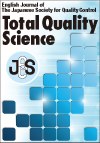Many companies need to know how to appeal to consumers in favor of their products and services by broadcasting commercial messages (CMs) through TV. CMs are expected to create and nurture the best image of the company and the products among consumers, and to promote the purchasing activities of consumers through consumer viewing. However, these effects are difficult to produce without strategies. CMs should be designed with the appropriate concept and content. Therefore, there is a need to recognize what stimulates the psychological change in consumers leading to purchase activity: that is, the physical change of recognizing the item and buying the item. Subsequently, and the element(s) of the physical change should be analyzed to shed light on the appropriate target consumers for designing CMs.
In this study, we focus on a popular yogurt brand in Japan called “Meiji's Purobio yogurt R-1”, analyzing the psychological change in consumers attributed to CMs on TV based on the attributes of 3,000 consumers' data and their TV browsing history. For grasping the psychological state of consumers, we apply the attention, interest, desire, action, satisfaction model and define the consumers' five psychological states based on questionnaire data. The factors of CMs with effects on consumers in each psychological state are clarified using two clustering approaches.
View full abstract
